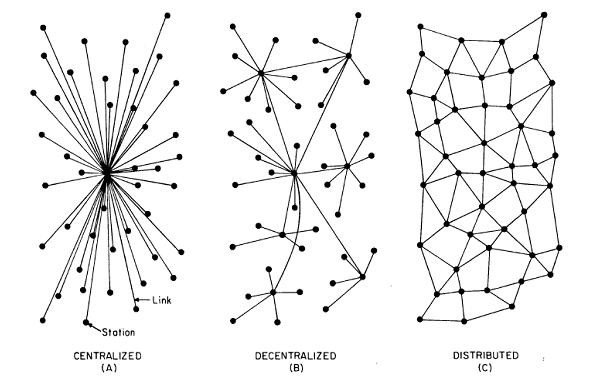We will discuss about DApps/ Distributed Apps. When we talk about an application, it is very easy to imagine the applications that exist on the gadgets that we have.
Application or some of us know it as software. More specifically, the application is software with a specific purpose.
Today there are tons of apps available, from mobile apps as well as on PCs or other devices. Almost all of them are centralized applications, or use a centralized server model.
Then, during the current development of blockchain, crypto currency users began to talk about Decentralization Apps.
Difference Between Distributed, Decentralized and Centralized Applications

Before knowing what DApps / Distributed Applications are, it’s good to know the differences between the three basic application architectures.
As we have seen, the majority of applications that exist today are centralized applications.
- Centralized Application System
This centralized system uses a central server to provide services to every user in their network. Like Facebook, Google, and some E-Commerce. As users, we will depend on the strength of their servers and networks to send and receive data.
Multiple Applications can use a centralized system and a distributed system at the same time. Like Google, which is developing a combination of the two systems for low-latency, to increase network speed.
- Distributed Application System
Then the distributed application system burdens computing (sending/receiving, processing) data on other nodes . Node can mean another server, or a computer that performs computing in a different place.
Or we can compare the central warehouse and branch warehouses in several cities, but to issue / enter goods with instructions from the central warehouse. Although it does not rule out the branch warehouse / branch nodes make their own decisions.
- Decentralized Application System
While the decentralized application system frees each node in the network to have its own decisions. It does not have centralized instructions and the data on each node does not have the overall data, because the data is partially spread over each network node .
If it still describes the warehouse, then it is more in line with the store warehouse. In contrast to enterprise warehouses such as distributed Apps systems.
In this store warehouse, each store can exchange goods or retrieve and send data according to their needs and desires.
Blockchain and DApps Relationship
To increase efficiency, most of the cryptocurrency blockchains use DApps. Because Blockchain works peer-to-peer to distribute each block in the network.
Block / Block contains hash records , timestamps, and transaction data. Then the blockchain is a ledger that contains various records of these blocks. The records of these transactions, are distributed partially (not entirely) to all computers in the blockchain network.
Each new block will record the previous transaction and the current transaction, this new record will continue recording on another computer again. And each block, has been verified also by several other computers. So it is very difficult to modify the recorded data.
At the same time, if one of the computers is down or a problem occurs, it will not affect the running of the system. It will also protect against cyber attacks.
Because of this, Blockchain is also known as a Distributed Ledger. At the same time we know it as a Decentralized system at once.
Merging these two systems can occur because of the need for a secure and efficient network. Distributed Apps systems and decentralized applications without authority from a central server.
The use of this application provides various advantages such as storage, distribution of data, safe, all at once.
